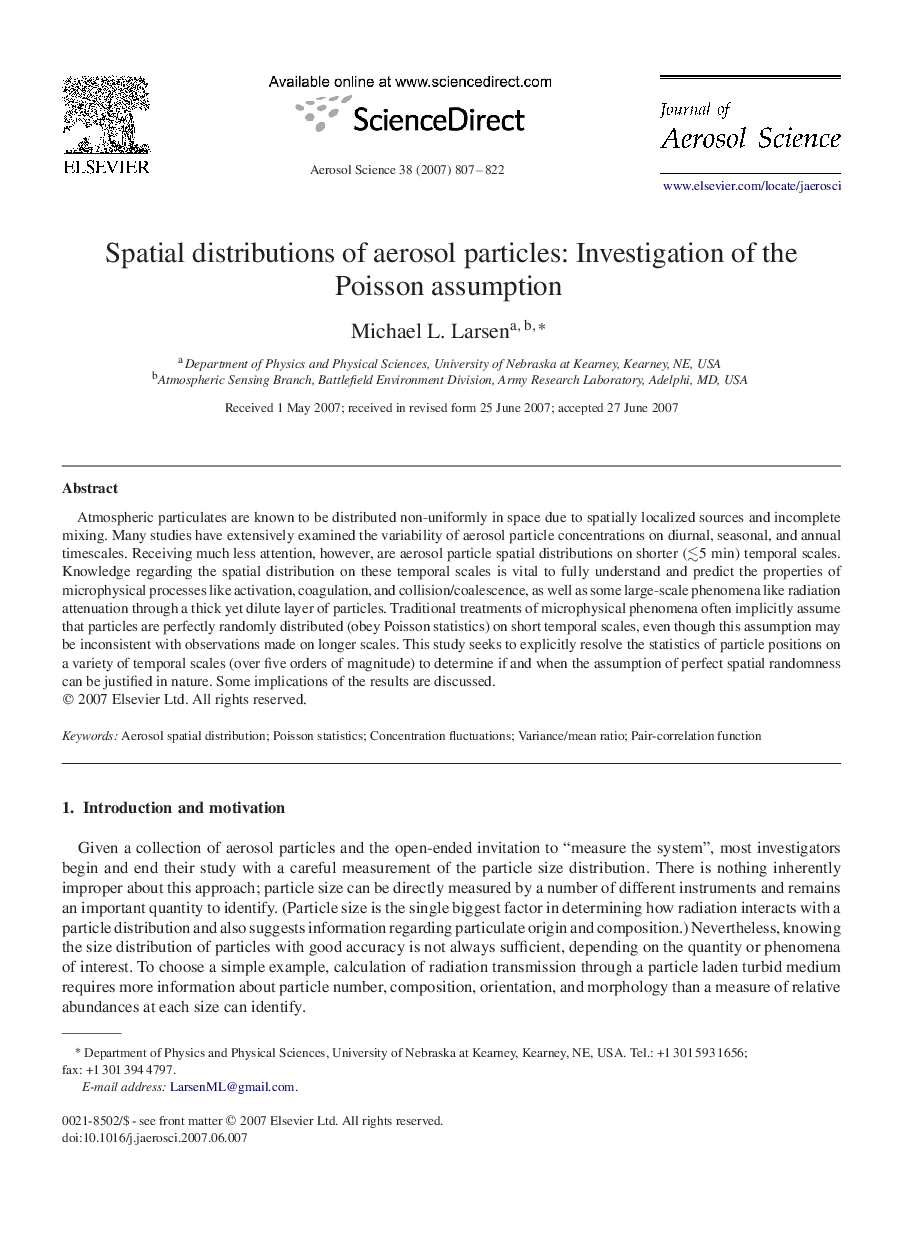| Article ID | Journal | Published Year | Pages | File Type |
|---|---|---|---|---|
| 4453381 | Journal of Aerosol Science | 2007 | 16 Pages |
Atmospheric particulates are known to be distributed non-uniformly in space due to spatially localized sources and incomplete mixing. Many studies have extensively examined the variability of aerosol particle concentrations on diurnal, seasonal, and annual timescales. Receiving much less attention, however, are aerosol particle spatial distributions on shorter (≲5min) temporal scales. Knowledge regarding the spatial distribution on these temporal scales is vital to fully understand and predict the properties of microphysical processes like activation, coagulation, and collision/coalescence, as well as some large-scale phenomena like radiation attenuation through a thick yet dilute layer of particles. Traditional treatments of microphysical phenomena often implicitly assume that particles are perfectly randomly distributed (obey Poisson statistics) on short temporal scales, even though this assumption may be inconsistent with observations made on longer scales. This study seeks to explicitly resolve the statistics of particle positions on a variety of temporal scales (over five orders of magnitude) to determine if and when the assumption of perfect spatial randomness can be justified in nature. Some implications of the results are discussed.
